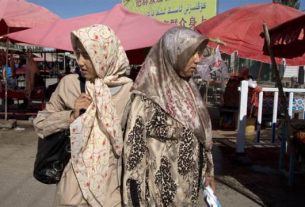In a bid to address the influx of asylum seekers entering Canada, the government implemented a deal earlier this year aimed at stemming the flow of individuals crossing the border irregularly from the United States. While initially appearing successful with a rapid decrease in border crossings, the latest data reveals a surprising turn of events. Instead of a decline in the overall number of asylum seekers, Canada is experiencing a surge in refugee claims, presenting challenges for the country’s immigration system. Previously, a significant number of asylum seekers entered Canada through unofficial crossings, primarily into Quebec via Roxham Road in New York, attracted by Canada’s reputation for more efficient processing and greater acceptance of asylum applications compared to the U.S.
Evolution of safe third country agreement: In response to this situation, Canada and the United States amended their long-standing asylum-seeker pact, the Safe Third Country Agreement, in March. This change expanded the agreement to cover the entire length of the countries’ 4,000-mile land border rather than just designated ports of entry, leading to a sharp decrease in the number of people intercepted at informal crossings.
However, despite the drop in unofficial border crossings, the total number of asylum seekers entering Canada has surged. Data from the immigration, refugees, and citizenship department indicates that the total number of refugee claims in Canada reached 12,010 in July, the highest monthly total since at least January 2017 and up from 10,120 in March. This increase is attributed to more people filing refugee claims at airports or local immigration department offices, often days, weeks, or months after arriving in the country.
Canada’s appeal in changing global context: Some experts suggest that Canada’s status as a relatively safe harbor amidst global pressures such as war, climate change, and human rights violations is driving this influx.
Other nations, including the European Union and the United States, have recently introduced measures to limit asylum claims, making Canada an attractive option for those seeking refuge. Although the government amended the agreement with the U.S. to address irregular crossings, some asylum seekers are attempting to bypass the agreement’s two-week rule by crossing undetected and hiding until the exemption period expires. Advocates working with migrants warn that this approach poses risks and encourages individuals to engage with smugglers.
The closure of Canada’s land border has unintentionally shifted the asylum system’s favor toward those who can obtain visas and plane tickets, leaving some of the most vulnerable individuals unable to access Canada’s protection. This has sparked discussions about the inequity of this development in Canada’s immigration policies. Despite the challenges, individuals like Hana Bakhit from Sudan and Grace Nanziri from Uganda continue to view Canada as a beacon of hope and refuge, drawn by its reputation for protecting human rights and providing safety. Canada faces the complex task of managing its asylum system, balancing its commitment to welcoming immigrants with the practical challenges of dealing with increasing numbers of asylum seekers, even as it seeks to encourage regular immigration to address labor shortages.__Daily Times





